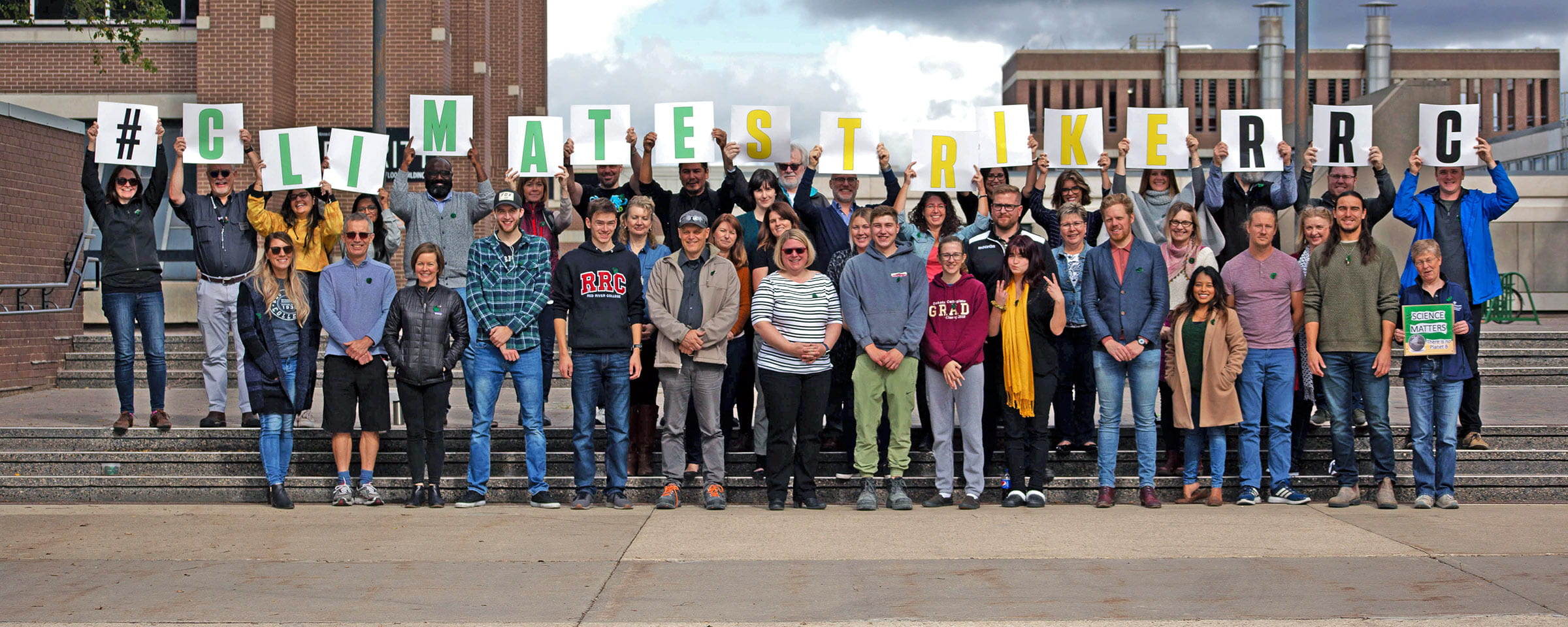


Urban Beekeeping at RRC Polytech
Did you know that one out of every three bites of food we eat is a result of pollinators like honeybees? And that crops like blueberries and cherries are 90% dependent on pollination?
We are helping protect our busy, buzzy buddies with our urban-hive program at RRC Polytech. Through a partnership with Beeproject Apiaries, we house honeybee hives each summer. Beeproject installs the hives, extracts the honey and delivers it to us. We sell it and use the hives to provide educational and engagement opportunities for staff and students to connect to nature and the local food system. This is all part of the emerging urban-beekeeping movement that keeps honeybee populations thriving and promotes biodiversity within cities.

It started in 2016, when we installed three hives on the 4th floor patio of RRC Polytech’s Paterson GlobalFoods Institute (PGI) downtown. Throughout the summer, students and staff were able to visit the bees with the beekeepers and participate in workshops, like honey extracting. The honey produced was named ‘Bijou’ after the park next door and was sold (out) at our first ever {RRC Polytech Farmers’ Market} in September 2016.
The project was such a success, that we added three hives to the Notre Dame Campus (NDC) A building roof in 2017. A honey naming contest determined the name of this new honey – Creekside – named so because Omand’s Creek, which runs beside the campus, is a popular foraging spot for bees. The grounds at NDC are a healthy and beautiful environment for our bees. They are maintained using biopesticides (rather than traditional pesticides), and a pollinator garden on the east side of the arboretum keeps our pollinators happy.
Honey produced each year (in equivalent 340g jars):
| Year | PGI (Bijou) | NDC (Creekside) | Total |
|---|---|---|---|
| 2016 | 289 | – | 289 |
| 2017 | 215 | 248 | 463 |
| 2018 | 255 | 274 | 529 |
| 2019 | – | 238 | 238 |
| Running Total | 758 | 760 | 1,519 |
Want some of the sweet stuff for yourself? We continue to sell the honey under our Creekside and Bijou honey labels. Pick up your jar at food services locations around campus, and at our annual Fall & Winter Markets!
If you’d like to see the bees in action, visit our hives at an extraction workshop. Check out our photos to see what it’s all about!
Get your buzz on with these fascinating facts about bees, some more information on urban beekeeping, or FAQs on our bees.
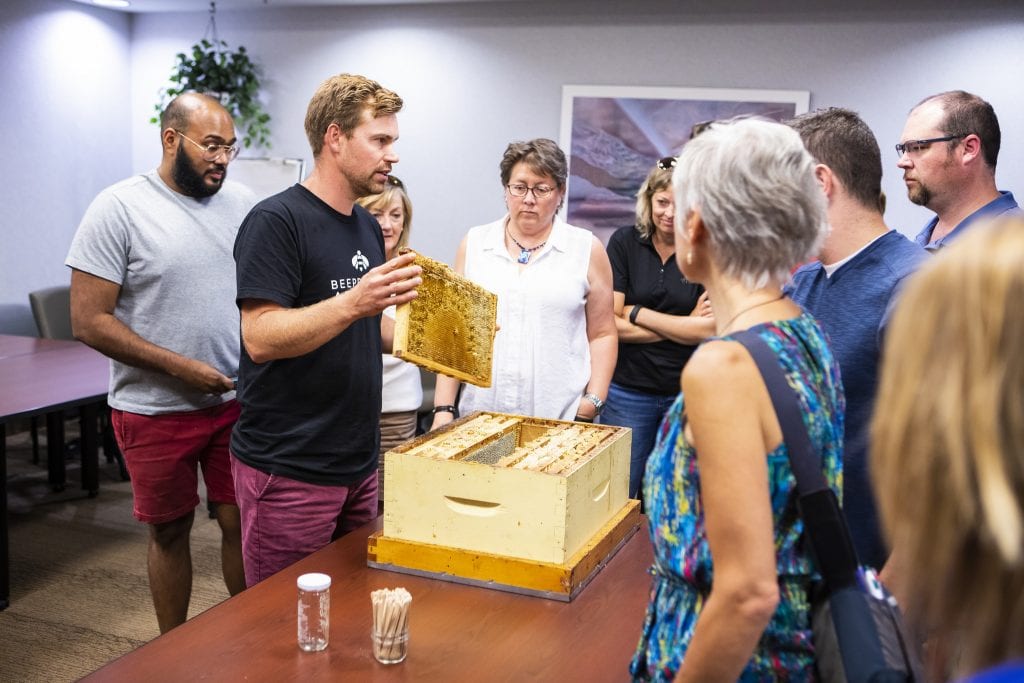
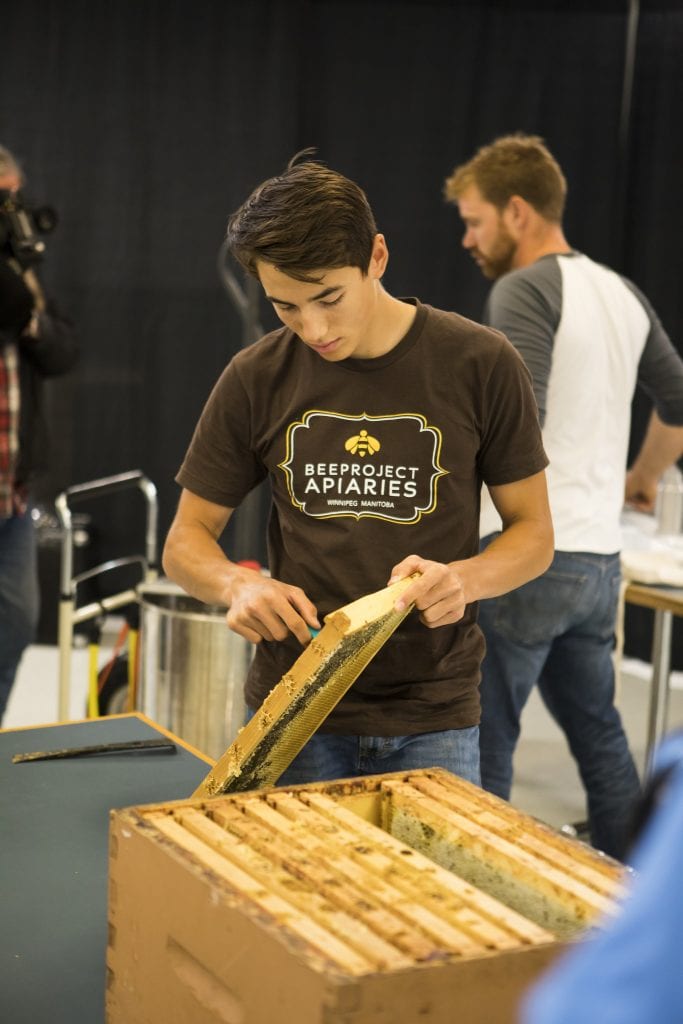
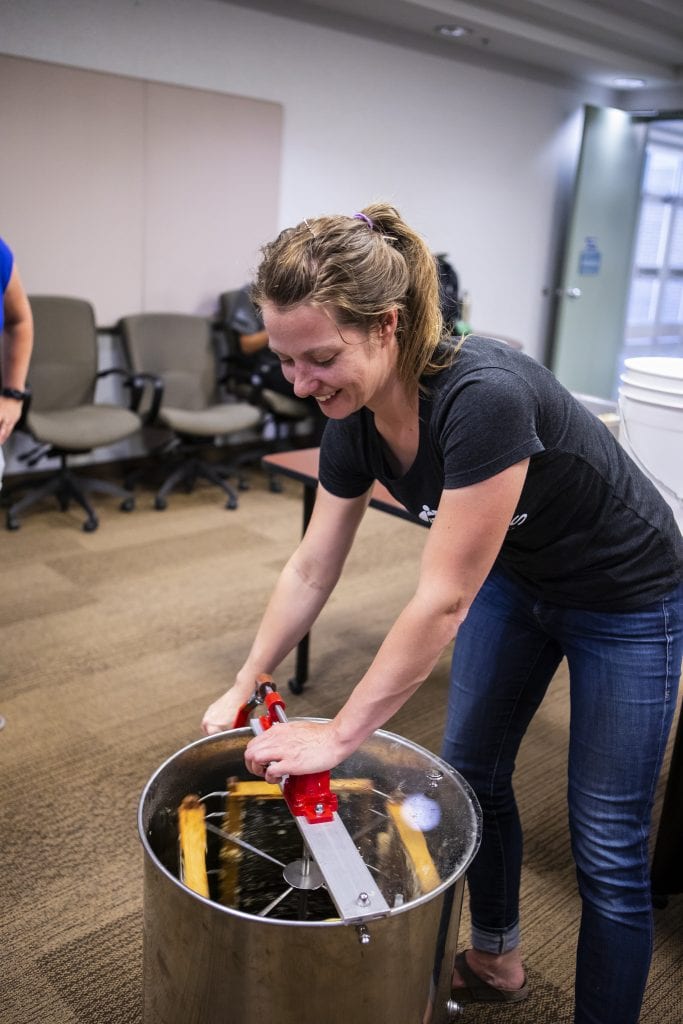
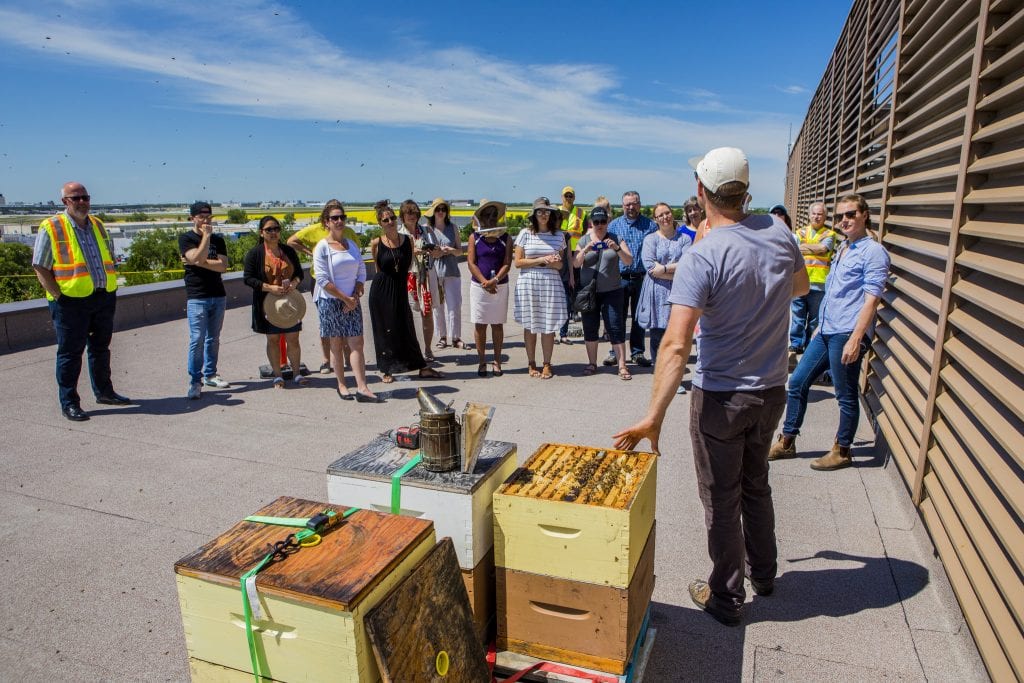
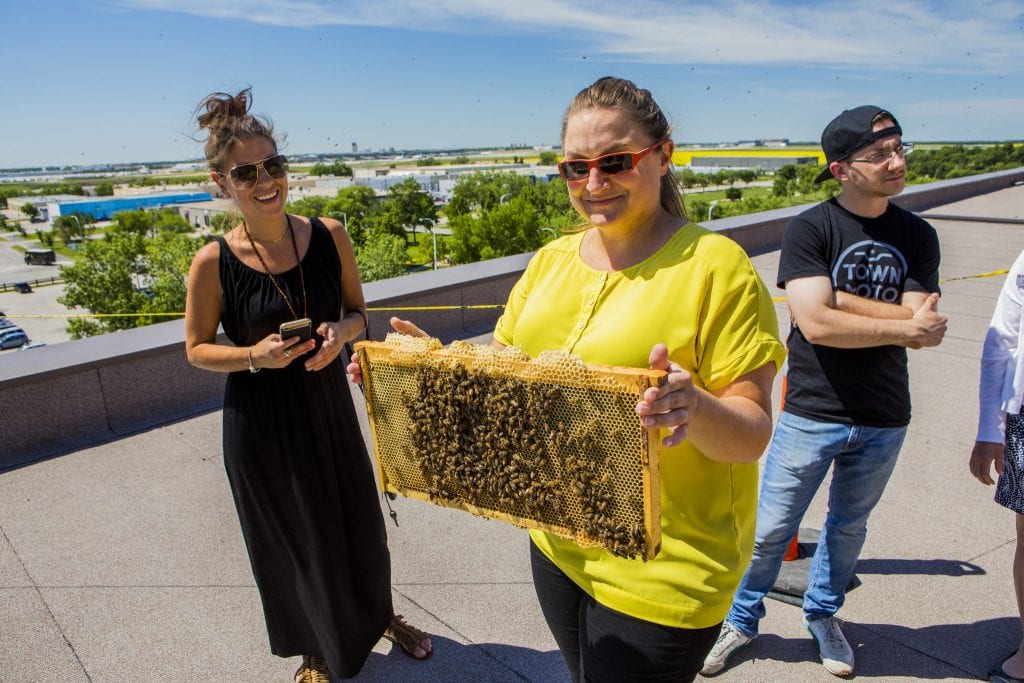
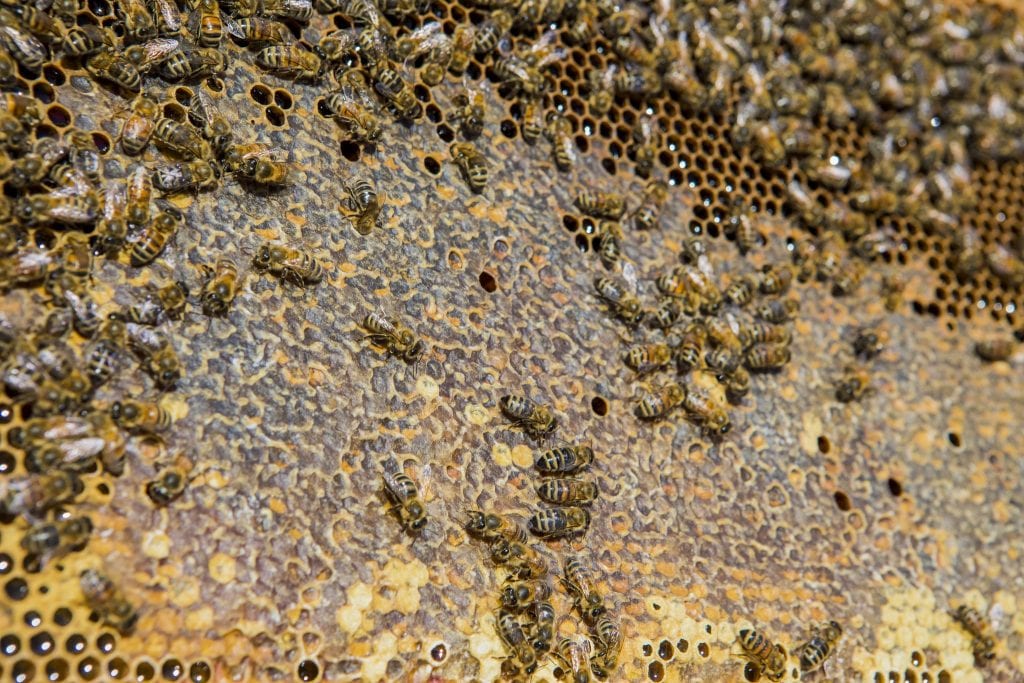
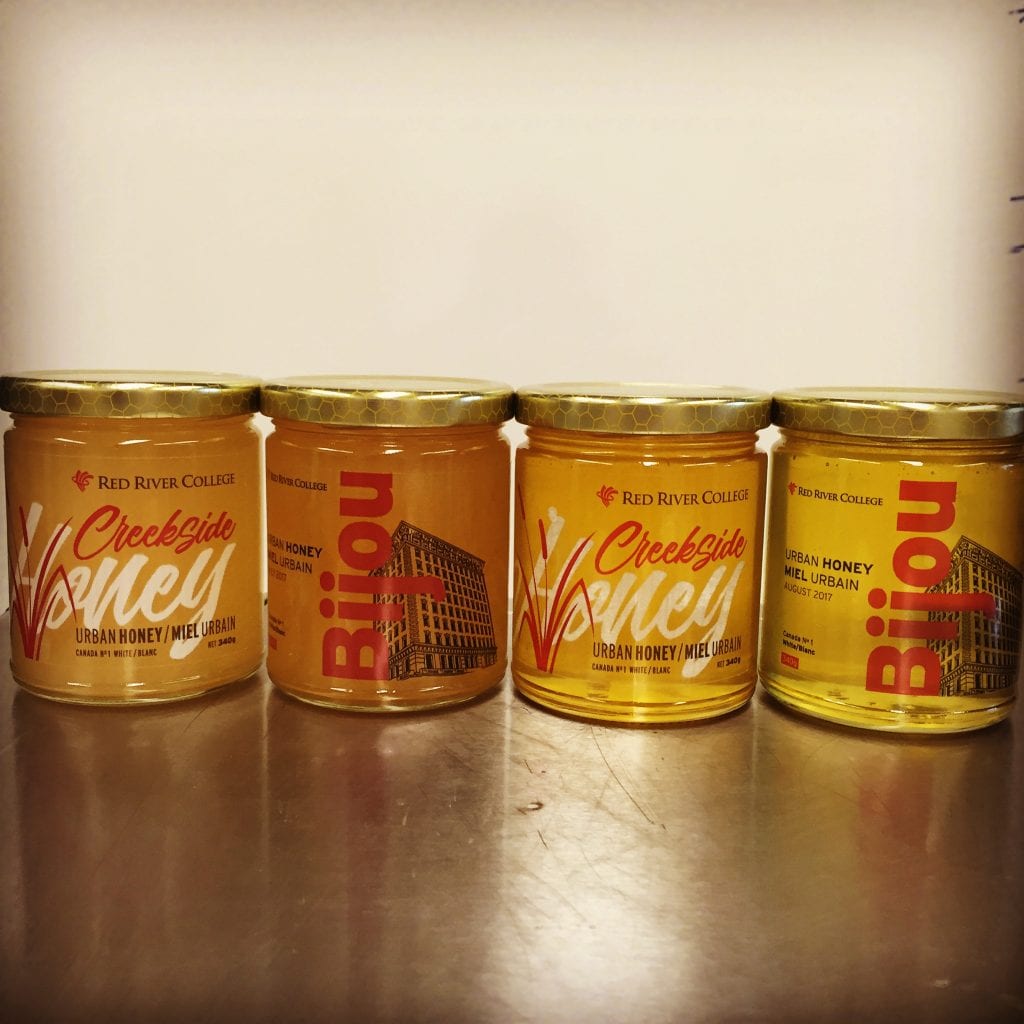
The bees that we support through urban beekeeping are European Honeybees, a non-native species to North America brought over by European settlers. These make up only a small slice of the pollinator pie-there are actually over 800 species of native bees in Canada and over 1,000 species of pollinators, including some wasps, flies, beetles, butterflies, moths, bats and birds. None of these native species produce honey but they are all important pollinators. Common native-bee species found locally in Manitoba are the bubble bee, the mason bee, and the leafcutter bee.
Honeybees are domesticated, farmed and kept in beehives where populations are supported by beekeepers. Native bees, on the other hand, are often solitary species that are at far greater risk. These bees don’t live in hives, preferring to build independent nests. Because they don’t have hives to defend, they are less aggressive. Some species are also more susceptible to certain pesticides than honeybees.
More than 700 of these North American bee species are declining, and nearly a quarter of bee species are at risk of extinction due to pesticide use, disease, and loss of habitat.
While many think of honeybees as the most important pollinator, native bees and other pollinators are even more important to our ecosystems and crop production. In a study of 41 different crop systems worldwide, honeybees only increased yield in 14 percent of the crops. All other pollination was thanks to native bees and other insects. Native bees also make a big impact on specific crops. In watermelons, native bees are responsible for 90 percent of the pollination. In blueberries, they create twice as much fruit as honey bees, and in tomatoes, the bumblebee is the best pollinator since honey bees aren’t physically big enough to do the job.
It is important to protect all pollinators, not just honeybees. Our College helps other pollinators thrive by avoiding harsh pesticides and having a pollinator garden. You can help too!
RRC Polytech campuses are located on the lands of the Anishinaabeg, Ininiwak, Anishininwak, Dakota Oyate, and Denésuline, and the National Homeland of the Red River Métis.
We recognize and honour Treaty 3 Territory Shoal Lake 40 First Nation, the source of Winnipeg’s clean drinking water. In addition, we acknowledge Treaty Territories which provide us with access to electricity we use in both our personal and professional lives.